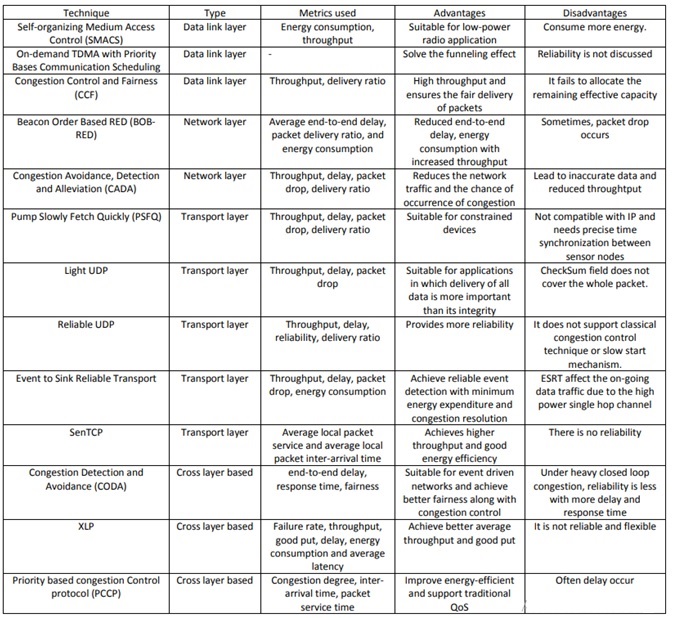Strategy Relate to Congestion Control Protocol for Wireless Sensor Networks
DOI:
https://doi.org/10.5281/zenodo.10717547Keywords:
wireless sensor, congestion control, congestionAbstract
Numerous sensor nodes make up a wireless sensor network, and when an event occurs, these nodes become active transmitters, increasing data flow. Congestion arises as a result of a high data transmission volume and limited bandwidth. This causes packets to be delayed or even dropped, wasting the node's energy. To control traffic at a reasonable level, a congestion control plan is required. The performance metrics, benefits, and drawbacks of cross-layer based techniques, as well as network, transport, and data link layer techniques, are reviewed in this study.
Downloads
References
Melchizedek I. Alipio, & Nestor Michael C. Tiglao. (2017). Improving reliable data transport in wireless sensor networks through dynamic cache-aware rate control mechanism. IEEE 13th International Conference on Wireless and Mobile Computing Networking and Communications (WiMob).
Anwar Ahmed Khan, Sayeed Ghani, & Shama Siddiqui. (2017). Design & implementation of distributed congestion control scheme for heterogeneous traffic in wireless sensor networks. IEEE International Conference on Multisensor Fusion and Integration for Intelligent Systems (MFI 2017), Daegu, Korea.
Rashmi M. Kittali, Mahabaleshwar S. K, & A. V. Sutagundar. (2016). Congestion controlled adaptive routing in wireless sensor network. International Conference on Signal Processing, Communication, Power and Embedded System(SCOPES).
Yao Yukun, Liu Jiangbing, Xu Dongliang, Ren Zhi, & Hu Qing. (2017). Centralized congestion control routing protocol based on multi-metrics for low power and lossy networks.
Mohamed Amine Kafia, Djamel Djenouri, Jalel Ben Othman, Abdelraouf Ouadjaout, Miloud Bagaa, Noureddine Lasla, & Nadjib Badache. (2014). Interference - Aware congestion control protocol for wireless sensor networks. The 5th International Conference on Emerging Ubiquitous Systems and Pervasive Networks(EUSPN-2014).
R. Annie Uthra, S. V. Kasmir Raja, A. Jeyasekar, & Anthony J. Lattanze. (2014). A probabilistic approach for predictive congestion control in wireless sensor networks. Zhejiang University-Science (Computers & Electronics), 15(3), 187199.
Zhi Liu, Yun Zhang, & C.L. Philip Chen. (2013). Adaptive mechanism-based congestion control for networked systems. Systems Science, 44(3), 533-544.
Akbar Majidi, & Hamid Mirvaziri. (2014). BDCC: Backpressure routing and dynamic prioritization for congestion control in WMSNs Computer Network and Information Security, 5, 2934.
Saurabh Jaiswal, & Anamika Yadav. (2013). Fuzzy based adaptive congestion control in wireless sensor networks. In: Proceedings of Sixth International Conference on Contemporary Computing, pp.433-438.
Pavlos Antoniou, Andreas Pitsillides, Tim Blackwell, AndriesEngelbrecht, & Loizos Michael. (2013). Congestion control in wireless sensor networks based on bird flocking behaviour. Computer Networks, 57, 1167–1191.
Abbas Ali Rezaee, Mohammad HosseinYaghmaee, & Amir Masoud Rahmani. (2013). COCM: Optimized congestion management protocol for healthcare wireless sensor networks. Wireless Personal Communications, 75(1), 11–34.
Abbas Ali Rezaee, Mohammad Hossein Yaghmaee, Amir Masoud Rahmani, & Amir HosseinMohajerzadeh. (2014). HOCA: Healthcare aware optimized congestion avoidance and control protocol for wireless sensor networks. Network and Computer Applications, 37, 216–228.

Downloads
Published
How to Cite
Issue
Section
ARK
License
Copyright (c) 2024 Dr. Anmol Chand Jain

This work is licensed under a Creative Commons Attribution 4.0 International License.
Research Articles in 'Applied Science and Biotechnology Journal for Advanced Research' are Open Access articles published under the Creative Commons CC BY License Creative Commons Attribution 4.0 International License http://creativecommons.org/licenses/by/4.0/. This license allows you to share – copy and redistribute the material in any medium or format. Adapt – remix, transform, and build upon the material for any purpose, even commercially.










